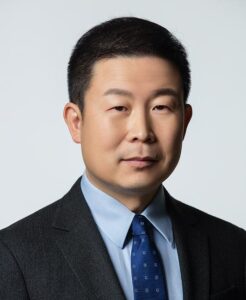The patent system is one wherein technical disclosure is traded for protection. The two fundamental objectives of the Patent Law, namely, the protection of the personal interests of the patentee and promotion of the public interest in scientific and technological progress, hinge on the balance of patent protection and disclosure. The fourth paragraph of Article 26 of the Patent Law provides that “the claims shall be based on the description”. The claims mainly define the scope sought to be protected by the patent, whereas the description embodies more the patentee’s technical contribution, which is disclosed to the public. It is, therefore, a key mechanism devised to balance protection and disclosure in the Patent Law.

Senior Partner
Wanhuida Peksung IP Group
On the basis of the Patent Law, the Patent Examination Guidelines specify that the technical solution for which the claims request protection is a solution a person skilled in the art can obtain directly or generalize from the content disclosed in the description. Also, the scope of the claims may not exceed the content recorded in the description.
In addition to the provisions of the Patent Law and the Patent Examination Guidelines, the Supreme Court has rendered judgments and rulings in respect of the support of the claims by the description in several typical cases. This is of guiding significance in the application of the fourth paragraph of Article 26 of the Patent Law in practice.
In 2005, in the Xu Wenqing case, the Supreme Court referenced the Patent Examination Guidelines in ascertaining the judicial adjudication rules, which are identical to those of the examination guidelines in the matter of support.
In 2010, in the Eli Lilly case, the Supreme Court further elaborated that, “if the generalization of the claims would cause a person skilled in the art to have reason to doubt that one or more subordinate concept(s) or option(s) contained in the superordinate generalization or parallel generalization cannot resolve the technical issue, which the invention proposes to resolve and achieve an identical technical effect”, such generalization exceeds the scope disclosed in the description. One of the claims for the patent in question involved the delimitation and protection of a method of preparing a pharmaceutical by using such factors as the raw materials, quantities, reaction temperature and solvent.
The Supreme Court held that the generalization of the claim in question contained numerous other solutions, which could not resolve the technical issue the invention proposed to resolve, such that a person skilled in the art could not easily deduce, from the permutation and combination of various reaction conditions, the solution that could resolve the technical issue through conventional experimentation or reasonable inference, but, instead, would require a great deal of repeated experimentation or excessive labour to determine the scope of the claim. Therefore, the scope of the generalization of the claim was overly broad and, as such, not supported by the description.
In 2017, on the basis of the criteria set in the Eli Lilly case, the Supreme Court clarified in the Sensormatic Electronics case the means for determining the “technical issue that the patent proposes to resolve”. The Supreme Court held that the provision “the claims shall be based on the description” addresses the correlation between the claims and the description, and that the relevant content recorded in the description itself should be taken as the fundamental basis in determining the technical issue the patent in question proposes to resolve and the technical effect it achieves. The court may determine the technical issue the patent proposes to resolve and the technical effect it is to achieve by taking into consideration the background technology recorded in the description and the defects existing therein, the “objective of the invention”, the “technical issue to be resolved” and the “beneficial effect” recorded in the summary of invention and the content relating to the “technical issue” and “beneficial effect” in the specific embodiments.
However, it should be noted that the “technical issue actually resolved” referred to in the determination of a patent’s inventive step is determined anew, based on the technical features that enables the distinguishing of claims from the “closest prior art”, and cannot directly serve as the basis for determining if the claims are based on the description. In the provisions on which the inventive step and claims are to be based, the description stipulates and regulates the legitimacy of the claims from different perspectives. Even if the claims involve inventive step, whether the various technical features, including the distinguishing technical features, recorded therein are properly generalized and whether the technical solution delimited by the claims as a whole is properly generalized still require determination, based on the fourth paragraph of Article 26 of the Patent Law.
In the Sensormatic Electronics case, the patent in question concerned a marker used in magnetomechanical electronic article surveillance systems. The Supreme Court held that, comprehensively considering such content in the description of the patent in question as the background technology, objective of the invention, the beneficial effects, specific embodiments, etc, the improvement made by the patent in question over the background technology mainly lay in using a specific material to fabricate the bias element in the marker such that the marker could be deactivated more easily and would not be accidentally deactivated under a conventional operating environment.
The great majority of the claims for the patent in question were not delimited by the specific material of the bias element, but rather by the properties or parameter range of the materials or marker. The Supreme Court held that claims so delimited included numerous other bias elements made from known and even unknown substances and a person skilled in the art would have to go through a great deal of selection and experimental verification to be able to confirm which specific materials could resolve the technical issue that the patent in question proposed to resolve and achieve the technical effect that the patent in question proposed to achieve. Accordingly, the scope of protection of these claims exceeded the extent fully disclosed in the description of the patent in question and the extent of the technical contribution by the patent in question and, therefore, failed to take the description as their basis.
Johnson Li is a senior partner at Wanhuida Peksung IP Group
北京市海淀区中关村南大街一号
友谊宾馆颐园写字楼 邮编:100873
Yiyuan Office Building, Friendship Hotel
No. 1 Zhongguancun Street South
Haidian District, Beijing 100873, China
电话 Tel: +86 10 6892 1000
传真 Fax: +86 10 6894 8030
电子信箱 E-mail:
johnsonl@wanhuida.com
www.wanhuida.com






















